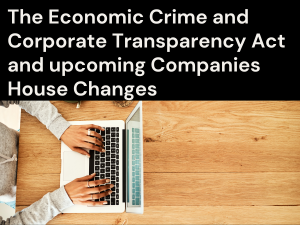On 1 July 2021 the EU will introduce new VAT e-commerce rules, which will have an impact on online businesses selling to consumers (B2C) in the EU. This article breaks down what you need to know, and what you need to do ahead of the new rules coming in to force.
The key changes
The new EU VAT rules coming into force on 1 July include the following:
- No more distance selling thresholds.
- No more low value consignment relief.
- Introduction of the new One-Stop shop (OSS).
- Introduction of the new Import One-Stop shop (IOSS).
As a result, the new rules will impact a business that currently has:
- Distance sales of goods from third countries, including the UK, into the EU.
- Intra-EU distance sales of goods, e.g. sales of goods from a warehouse in France to a customer in Germany.
There are also changes for businesses that use online marketplaces, such as Amazon, Ebay and Etsy, however, we will cover these new rules in a separate article.
Format of this article
We want this to be a useful and practical guide for UK businesses that helps you understand what you need to know and do. So, we’ve split the article in to two sections:
- UK businesses with a presence ONLY in the UK who will export to the EU
- UK businesses with a presence in the UK and in the EU, including those holding stock in the EU.
But first, let’s briefly cover why the EU are bringing in these new rules for ecommerce businesses.
Why are the EU changing the VAT rules for ecommerce?
Put simply, money.
The EU currently estimates it’s losing somewhere in the region of €5-7 billion in tax revenue every year under the existing rules. With the continued rise in cross-border commerce this trend looks set to increase, and so the EU are overhauling the existing rules to raise tax revenue.
The EU are aiming to simplify the VAT rules (to aid compliance!) and level the playing field for EU based sellers, who are currently being outcompeted by cheaper, overseas sellers.
However, as we’ll see, the rules are far from simple, so it’s important you understand the implications for your business.
Part 1. UK businesses with a presence only in the UK
For those UK businesses who currently export to consumers in the EU and who do not otherwise have an EU presence the following changes are relevant:
- No more low value consignment relief.
- Introduction of the new Import One-Stop shop (IOSS).
Removal of low value consignment relief
Currently, EU imports of goods less than £20/€22 are exempt from import VAT when they enter the EU. For businesses that regularly sell goods with a value less than this, you’ll know they typically enter the EU free of any VAT and hassle.
However, from 1 July, this low value relief will disappear. VAT must be charged on all goods, regardless of their value.
There are two ways which the VAT will be charged, either through import VAT or through the new import one-stop shop (IOSS) regime.
If you opt to do nothing, then from 1 July, when the goods reach the EU border import VAT will be charged. If your customer is the importer on record (as is usually the case for B2C sales) they will receive a demand from the freight agent to pay the import VAT due. Typically, this is payable before the item is released by the freight agent.
The benefit of this regime is that for the business it is simple, as it puts the onus on the customer to deal with the import VAT. If you opt for this approach, it’s recommended you have a clear statement to this effect during checkout on your store. The key negative to this approach is it is likely to result in a poor customer experience and may put off customers from buying from you in the future.
Alternatively, you can opt to use the IOSS regime.
Introduction of the new Import One-Stop Shop (IOSS)
Firstly, let’s make this clear, the new IOSS is OPTIONAL. It is not a mandatory regime, however, as we’ll explore below, there are some benefits to businesses using it.
A business can opt to use the new IOSS regime when it makes distance sales of goods from a third country, such as the UK, to a customer in the EU. So, where goods are located outside the EU at the point of sale, this scheme is relevant.
The IOSS scheme only applies for consignments with a value which does not exceed €150. This is a really important point, as for businesses who regularly or always sell goods above this amount the IOSS regime is not available, and therefore by default VAT will be charged on import. Note the €150 excludes any taxes or VAT.
Where a business opts to use IOSS and makes a sale to an EU customer it will charge the EU VAT to the customer at the point of sale. The rate of VAT charged should be the correct rate based on the VAT rate in the customers location. For example, the German VAT rate is 19% and so where goods are being sent to a customer in Germany, the rate of VAT charged at the point of sale must be 19%.
It’s therefore crucial that systems are updated to correctly account for EU VAT where IOSS is used. We understand that most ecommerce platforms, including Shopify, are currently able or will be able to handle this and so it is a case of updating your financial settings on your store.
On a monthly basis, the EU business will then complete an IOSS VAT return and pay over the VAT to the EU tax authorities.
The key benefit of using IOSS is an improved customer experience. Simplified customs declarations mean goods sold using the regime will use the so called ‘green lane’ at the EU border, with no VAT due on import. This is expected to improve delivery times and will mean your customers do not receive a freight agent demand for import VAT.
By now you’ll have noticed the word consignment, so a note on what we mean by this. A consignment is the package sent to your customer. Let’s consider an example where a customer in France buys two T-Shirts with a value of €100 each. The total value of the transaction is €200. Where these T-Shirts are sent together, the value of the consignment is therefore €200, which exceeds the €150 threshold and IOSS is not available. However, sometimes these goods may be sent as two separate packages (perhaps because they come directly from two different suppliers, or are located in two different warehouses) and now the value of each consignment is €100. In which case, the IOSS regime is available. Businesses therefore need to ensure their systems can identify the value of each consignment that will be sent at the point of checkout.
If you would like to register for the IOSS scheme, then currently UK businesses will need to appoint an EU intermediary to do so. The intermediary will register the business for IOSS in their Member State and issue an IOSS VAT identification number. Clearly, this is an additional administrative burden and cost for small businesses. It was hoped that the EU would remove the requirement for UK businesses to appoint an intermediary, possibly by the 30 June, although with less than a week to go this is looking increasingly unlikely.

Part 2. UK businesses with an EU presence
For businesses based in the UK who export to consumers in the EU but who also have a presence in the EU, such as holding stock, the following changes are relevant:
- No more low value consignment relief.
- Introduction of the new Import One-Stop shop (IOSS).
- No more distance selling thresholds.
- Introduction of the new One-Stop shop (OSS).
We’ve already considered the first two points, and these remain relevant where the business is exporting goods to the EU. So, this section focuses on removal of distance selling and the introduction of the OSS.
Removal of distance selling thresholds
Currently, sales of goods from one EU country to another (known as intra-community sales) are subject to distance selling thresholds. So, say a business is located and registered for VAT in Spain, that business can make sales to consumers in other EU territories like France and Germany without having to immediately register for VAT in either of those two countries. However, as soon as sales to either of those countries breach the distance sales threshold (which ranges from €35k-€100k, depending on the country) then the business will have to register locally.
Clearly, different countries having different thresholds confuses things, and makes VAT compliance harder.
So, from 1 July, the €35k-€100k thresholds disappear, and are replaced with a €10k threshold that applies to every single EU country. In our example, the Spanish business can now make up to €10k of sales to France and Germany respectively but as soon as it breaches the threshold in either country it will have to register locally for VAT there.
Now again, managing multiple VAT registrations in different EU countries adds a significant compliance burden. To counter this, the EU have introduced the new OSS.
It’s worth noting that the €10k threshold is annual and only applies to businesses established in the EU and who do not have more than one EU establishment, i.e. they are not located in another EU country.
Introduction of the new One-Stop shop
Firstly, let’s make this clear, the new OSS is OPTIONAL. It is not a mandatory regime, however, a key benefit of the regime is simplifying intra-EU VAT.
A business can opt to use the new OSS regime when it makes intra-community sales of goods from one EU country to another. So, where goods are located inside one EU country at the point of sale and sold to a consumer in another EU country OSS is relevant.
Note that OSS can also be used for non-EU sales of services to EU consumers.
There are two types of OSS, as follows.
- Union OSS –The Union OSS can be used to report VAT on intra-community sales of goods for businesses with or without an establishment in the EU. It can also be used to report VAT on sales of services to EU consumers – but only where the business has an establishment in the EU.
- Non-Union OSS – used to report VAT on sales of services to EU consumers – where the business does not have an establishment in the EU.
Like IOSS, where a business opts to use OSS and makes a sale to an EU customer it will charge the EU VAT to the customer at the point of sale. The rate of VAT charged should be the correct rate based on the VAT rate in the customer location.
Where a business opts to use OSS, it must be applied to all supplies and the business cannot pick and choose when to apply OSS.
On a quarterly basis, the business will then complete an OSS VAT return and pay over the VAT to the EU tax authorities.
If you plan to register for OSS, then for those businesses outside the EU, registration for the Union OSS should be in the location where they hold their stock. If you are only applying for the non-Union OSS then you can choose where to register. We understand that Germany and the Netherlands, typically two popular locations are struggling to get their systems in place for 1 July. Ireland is currently a popular choice simply due to their use of English but care should be taken to choose the right jurisdiction for you.
Recovering VAT using the IOSS or OSS
One point worth addressing is that both the IOSS and OSS regime are only relevant for paying VAT you owe. You cannot use either scheme to reclaim local VAT. If you wish to do so, you will need to register locally in each country and complete domestic VAT returns rather than use these schemes.
Wrapping up
Well, we got there, that wraps up the key EU VAT changes for ecommerce businesses from 1 July. If you’re still with us, great and thanks for reading – we hope you found it useful. We know we can’t always cover your exact scenario, so if you have a question then get in touch and let’s can have a chat.






